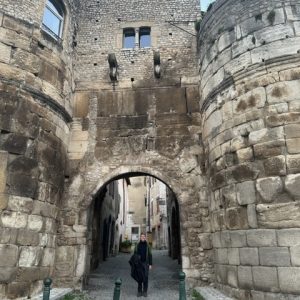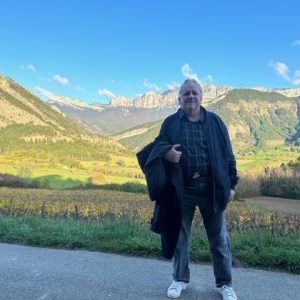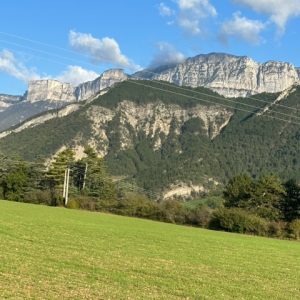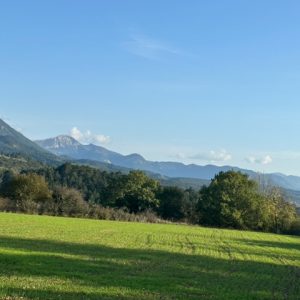Die, Southeast France
Jean Charles invited me to spend a couple of days with him in Die, a town of about 5000 inhabitants, in the Drôme department in southeastern France.
Jean Charles used to live in Die, but has moved an hour further east into the Alps to the town of Veynes. He has been my Webmaster since 2008, and become a good friend.
Die is perhaps best known for its sparkling wine, Clairette de Die, which is a pleasant, though not exceptional bubbly.
Like everywhere in France, Die has a long history. Habitation during the Neolithic age has been confirmed by the Chan Queyras excavations. A first settlement seems to have appeared at the beginning of the Roman era.
At the beginning of the 2nd century, the town of Die saw the construction of monumental architecture and also replaced Luc-en-Diois as the Roman provincial capital for the Celtic people of northern Voconces.
When the Roman Empire was showing signs of weakness, between 285 and 305, a fortified wall was constructed around the town, protecting an urban area of 25 hectares (62 acres); this wall is just over a mile long. See the photo of the ancient city gate.
Die was liberated by Americans towards the end of World War 2 on 20 August 1944.
Today, Die has become a hipster town, without losing its traditional crafts. It attracted “tele-workers” during Covid. There are now a couple of co-working spaces where young technologists work.
Die has a nice funky vibe with restaurants, cafes and bars, and a friendly local population. Indeed, according to one estimate, about 10 percent of the local population would be yoga instructors.
Die also attracts a significant number of tourists during summer, from countries such as The Netherlands and Belgium
But what I love most of all is the exceptional landscape and nature. Die is situated in the valley of the river Drôme, surrounded by the Glandasse mountain, a massive and steep rocky barrier, which separates the area (Pays Diois) from the Vercors Plateau. Jean Charles took me for a wonderful walk up into the high country, a walk I also did with him two years ago.
Unfortunately, I have never been able to visit The Die and Diois museum (Musée de Die) which not only exhibits the multiple and imposing remains of the Roman era but also tells the story of the Diois during prehistory, its time as an episcopal city in the Middle-Ages and the devastation caused by religious wars.
The museum has always been closed when I have visited. Another reason to come back





